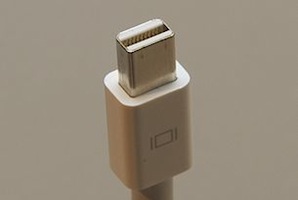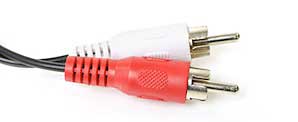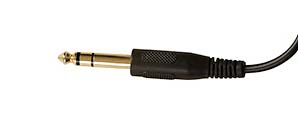How to Connect Your Computer and TV: Video 101
The following lesson was created by Vimeo for its Vimeo Video School. It's used here with permission. Look for a new lesson each week.
Look at you, proud filmmaker! Your epic masterpiece is online now. Old friends and new are watching your movie, loving every little detail that you painstakingly put into every scene. But when you invite your closest friends over to screen your film, everybody is huddled around a small laptop screen. Sure, this helps to build friendship and camaraderie, but wouldn't it be nice to use that huge slab of glass, metal, and silicon sitting in your living room to watch your film? How do you get your video onto a TV?
Connecting a computer to your TV is much easier today than it was a few years ago. Assuming you have an LCD, Plasma, or other flat-panel type of TV (more on that in a later lesson), hooking up your computer is a matter of having the right cable or adaptor. Here are the most common connection types and cables you'll need to do the job:
 VGA connector on top, DVI connector on bottom. Image courtesy of Shutterstock.
VGA connector on top, DVI connector on bottom. Image courtesy of Shutterstock.VGA is an analog connector that can be found on older flat-panel TVs and computers. VGA connectors and plugs are commonly, but not always, colored blue. Because of its analog signal, VGA cables are more susceptible to interference. For the most part, modern TV sets and computers have moved on from this stalwart connection of yore. However, if you encounter this connector in the wild, there are adapters that can convert the video signal from VGA to the more advanced connections below, and vice-versa. (PROTIP: VGA connections are not "hot-swappable", meaning you should not plug or unplug a VGA cable unless both the monitor and device are turned OFF).
DVI is a digital connector and the successor to VGA. You'll find DVI connectors more commonly on computers instead of TVs. Like VGA, there are adaptors that will convert the video signal to another type of connection. The plug on a DVI cable is often colored white. Some laptops may have a variant of DVI intelligently called Mini-DVI that requires an adaptor to connect to a monitor or TV.


HDMI and Mini DisplayPort. Images courtesy of Shutterstock and Wikipedia, respectively.
HDMI, an acronym for High-Definition Media Interface, is a digital connector that is prevalent across both consumer electronics and modern computers. As the name implies, HDMI sends video from a computer or other device to a TV in glorious High Definition, provided your computer and TV can handle those high resolutions. In addition to HD video, HDMI carries the audio signal to the TV, eliminating an extra cable from your computer. If you're trying to connect a mobile device or camera to your TV, a Mini or Micro-HDMI adaptor may be necessary, so check your instruction manual first.
DisplayPort is another modern, albeit less-common, connection that some computers use. It too carries both HD video and audio over a single cable. DisplayPort to HDMI adaptors are the best route to take if your computer has this connection.


RCA audio cables and a 3.5mm plug. Image courtesy of Shutterstock.
With HDMI and DisplayPort, audio cables aren't necessary, since these cables also carry the audio signal. If your TV only has a VGA or DVI connector, check to see if the TV has a 3.5mm audio in plug (similar to a headphone plug) or red and white RCA plugs. With a 3.5mm audio plug, simply connect a 3.5 audio plug from the headphone jack on your computer to the jack on the TV. If your TV has red and white RCA plugs, you'll need a 3.5mm to RCA adaptor. Luckily these are common and fairly inexpensive.
Once you're armed with the right cables and everything is plugged in correctly, the last step to ensure high quality video is to set the resolution of the video signal being sent to the TV. In an ideal world, this should be set automatically once you plug in your TV. If that doesn't happen, or if things just don't look quite right, you can set the resolution yourself; just follow the instructions for your Mac or Windows computers.
If all this cable nonsense is, well, nonsense to you, a set-top box hooked up to your TV might be more your style.
With the right video cables plugged in and audio roaring out of your surround sound system, the last step is to kick back with your friends, drink some age-appropriate beverages, launch Couch Mode on your computer, and enjoy the Vimeo.
Ready for more? Learn how to make a non-profit video or view more lessons at the Vimeo Video School.
Guest Post's article first appeared on OnlineVideo.net